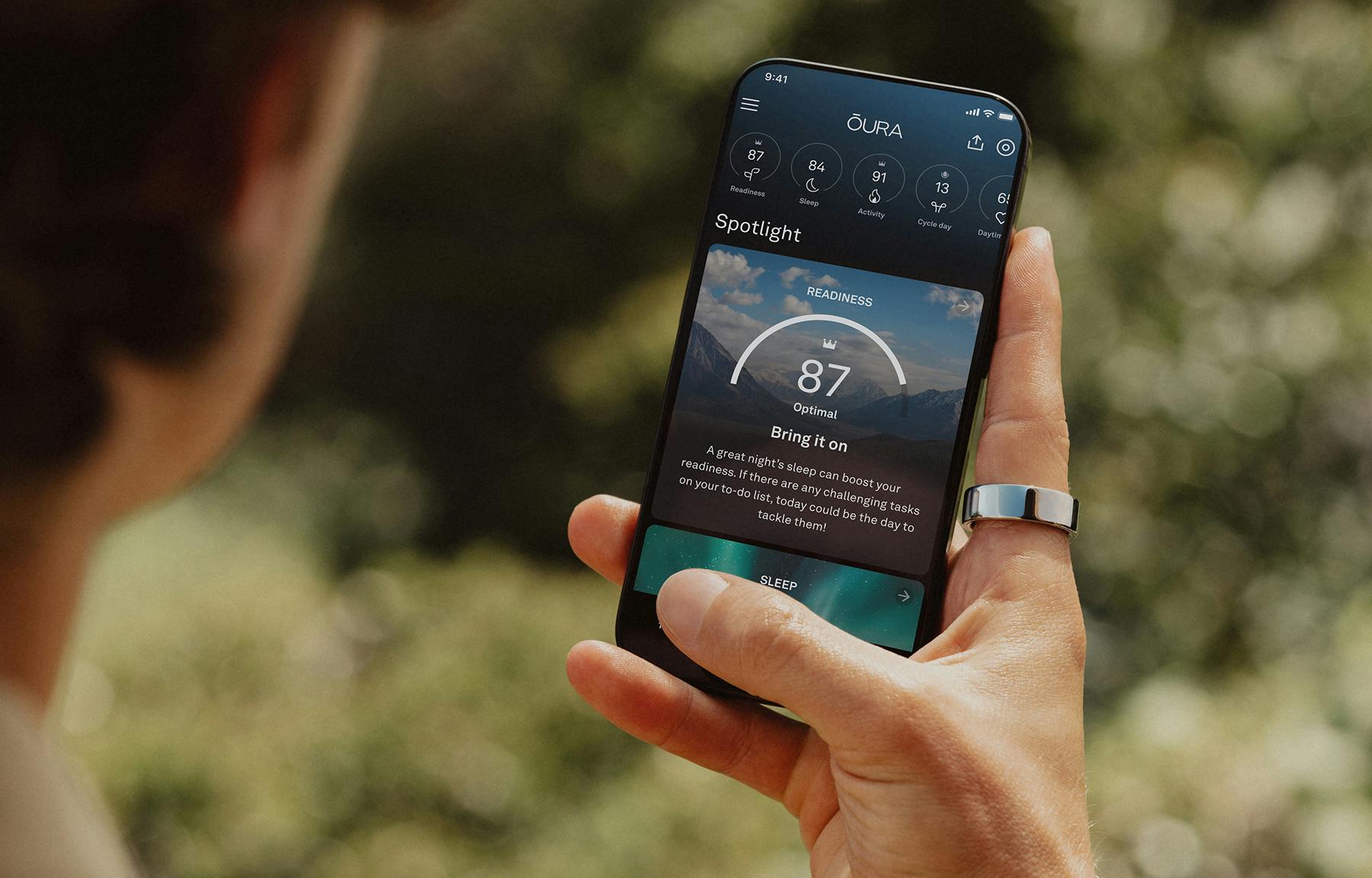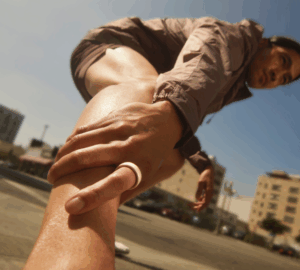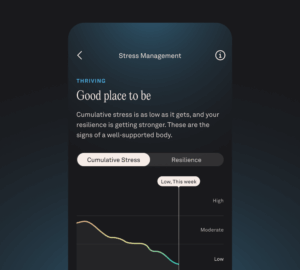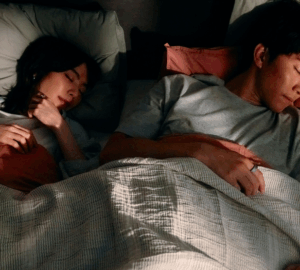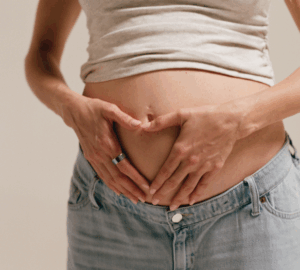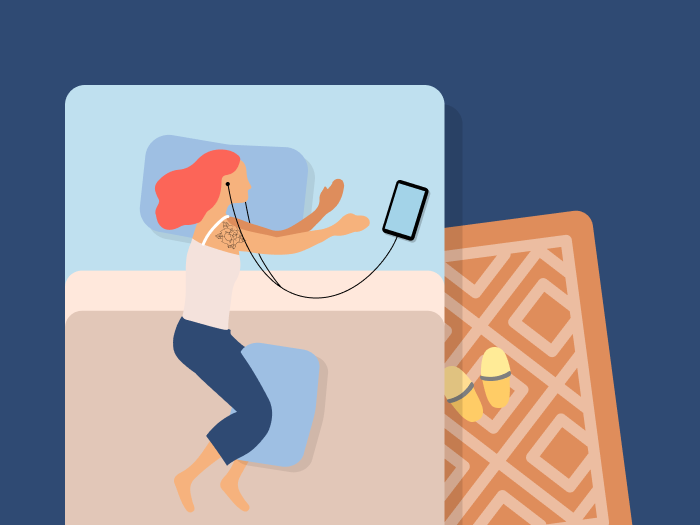- Your hip flexors, located in the front of the hips, are essential for movements such as running, jumping, cycling, and walking.
- The best sleeping positions for tight hip flexors are on your back with a pillow under your knees or on your side with a pillow between your knees to promote spinal alignment and relieve pressure on the hips.
- Oura provides detailed sleep metrics and personalized insights to help improve sleep through lifestyle changes and habits.
Your hip flexors are a group of muscles located in the front of the hips that help you flex or move your knees and legs up toward your body. These muscles play a crucial role in various activities, including running, jumping, cycling, and walking.
However, research has shown that being sedentary reduces hip extension flexibility, leading to increased tightness in the flexors. This means that if you, for example, spend most of your days glued to a chair, your muscles can’t move through their entire range of motion, and this can cause stiffness and discomfort in the hips, pelvis, and lower back. This can affect your quality of comfortable sleep at night.
| Member Tip: Get detailed metrics about your sleep, delivered in the form of a daily Sleep Score. |
READ MORE: How Does the Oura Ring Track My Sleep?
Common Causes of Tight Hip Flexors
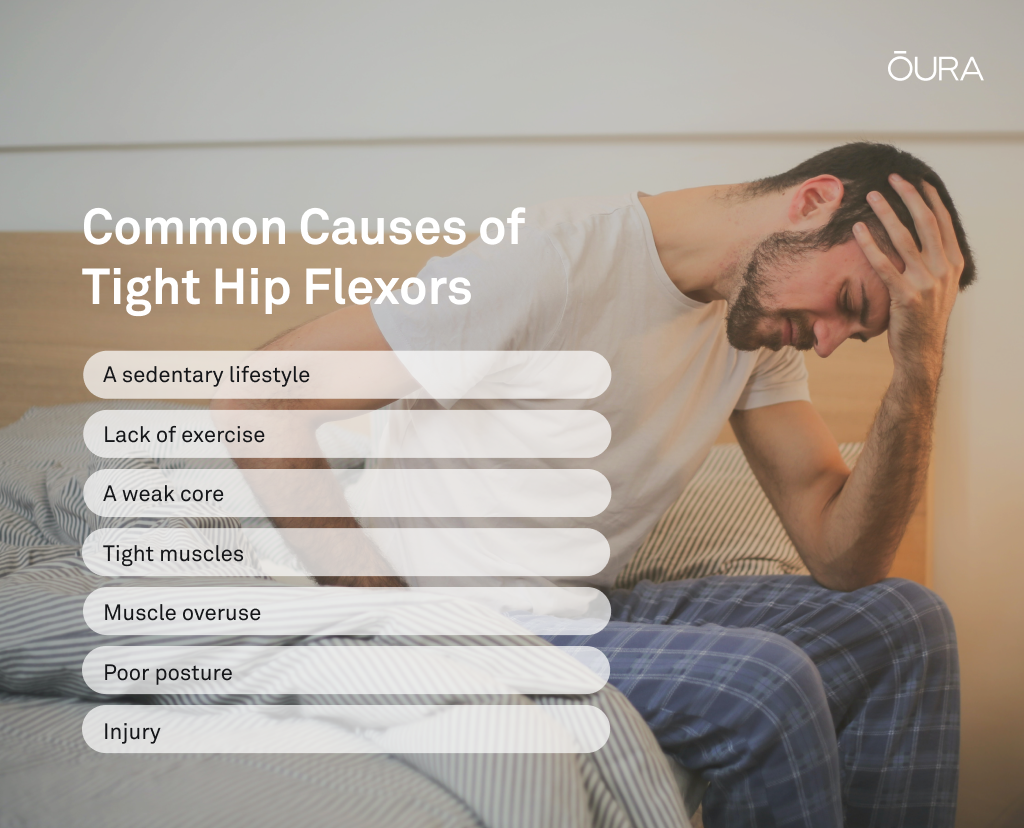
Tight hip flexors can be caused by factors including:
- Lack of exercise: Prolonged physical inactivity can cause the hip flexors to weaken, shorten, and become tight, as they are not being stretched or used regularly.
| Member Tip: You can enable inactivity alerts in your settings if you’d like to receive a friendly reminder to get your blood flowing after 50 consecutive minutes of inactivity. |
- A weak core: A weak core forces hip flexors to stabilize the spine, causing them to work overtime to provide this support. This may eventually lead to tightness in the flexors.
- Muscle overuse: Overuse of the hip flexors, such as during activities that require repetitive movements like running or cycling, can reduce mobility and cause the muscles to become tight.
- Poor posture: Maintaining poor posture, for instance, by slouching or leaning toward one side of the body, can cause the hip flexors to become tight over time.
- Injury: An injury to the hip or surrounding muscles can cause the hip flexors to become tight as a protective mechanism.
Tight hip flexors can be caused by various factors, but regardless of the cause, they cause pain and discomfort. This can make it difficult to get comfortable, affecting sleep and overall well-being.
How Do Tight Hip Flexors Affect Sleep Quality?
If you’ve ever felt uncomfortable when trying to sleep on your side or experienced an uncontrollable urge to move your legs at night, tight hip flexors could be the culprit behind your sleep disturbances. Hip flexor tightness can affect sleep in several ways:
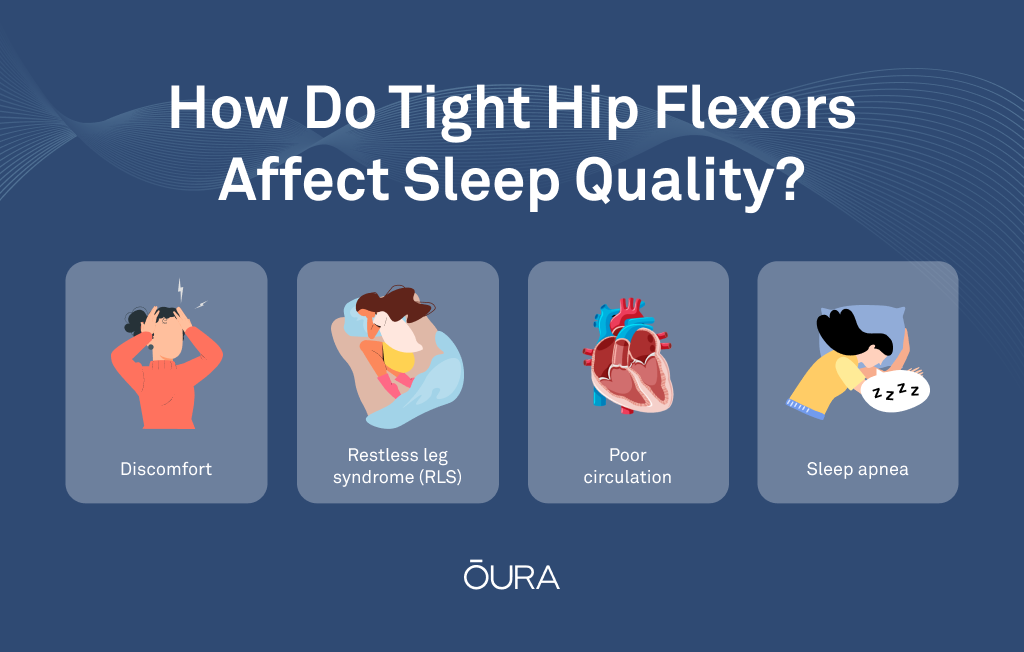
Discomfort
Tight hip flexors can cause pain and discomfort in a variety of situations, particularly when lying on your side. This is because your body weight is directly pressing down on your hip joint, compressing it, and causing additional discomfort. The pain and discomfort can make falling and staying asleep difficult, leaving you unrested the next day.
Restless Leg Syndrome (RLS)
Restless leg syndrome is characterized by an uncontrollable, often unpleasant urge to move your legs, especially at night. This can result in agitation and difficulty sleeping.
While the precise cause of most restless leg syndrome cases is unknown, there is evidence that tight hip flexors can contribute to its onset and severity. When your hip flexors are tight, they can pull on your pelvic muscles and affect the nerves that control your legs, resulting in restless leg syndrome sensations and movements.
| Member Tip: Utilize the Nighttime Movement feature to assess how nighttime restlessness may impact your sleep quality. |
Poor Circulation
When your hip flexors are tight, they can restrict blood flow to your legs and feet, which can lead to sensations of numbness or tingling. This can make it difficult to fall asleep and leave you feeling restless and uncomfortable throughout the night.
In addition, tight hip flexors also reduce blood flow and circulation through the hips themselves, leading to further physical discomfort and sleep difficulties. According to experts at Cleveland Clinic, “When you don’t move your hip joints in the right way, your body signals to stop producing synovial fluid and even reduces the blood flow to those areas.”
Sleep Apnea
Tight hip flexors can also contribute to sleep apnea, a condition in which breathing stops and starts repeatedly during sleep. This is because they can pull on the spine and disrupt its alignment, leading to breathing difficulties during sleep, as the airway becomes partially or completely blocked.
As a result, you may experience snoring, gasping, or choking during the night, which can disturb your sleep. Research supports the link between spinal misalignment and sleep apnea, demonstrating how the former makes people more susceptible to the latter.
READ MORE: Sleep Apnea, Defined — And How to Treat It
Can Oura Ring Detect Sleep Apnea?
While the Oura Ring cannot be used to diagnose sleep apnea, it can provide helpful insights on the quality of your sleep. Individuals with sleep apnea may experience reduced deep and REM sleep, which may be reported as excessive awake time in the Oura App.
Additionally, Oura members can use the Blood Oxygen Sensing (SpO2) feature to detect overall blood oxygen saturation levels, and variation in those levels, while you sleep. These measurements show how efficiently your body circulates and absorbs oxygen, making it a useful index of your overall health, as well as indicating possible disturbances in your breathing during the night.
The Best Sleeping Positions for Tight Hip Flexors
If you have tight hip flexors, the most suitable sleeping positions are those that promote spinal alignment and relieve pressure on the hips. Here are some sleeping positions that may be beneficial:
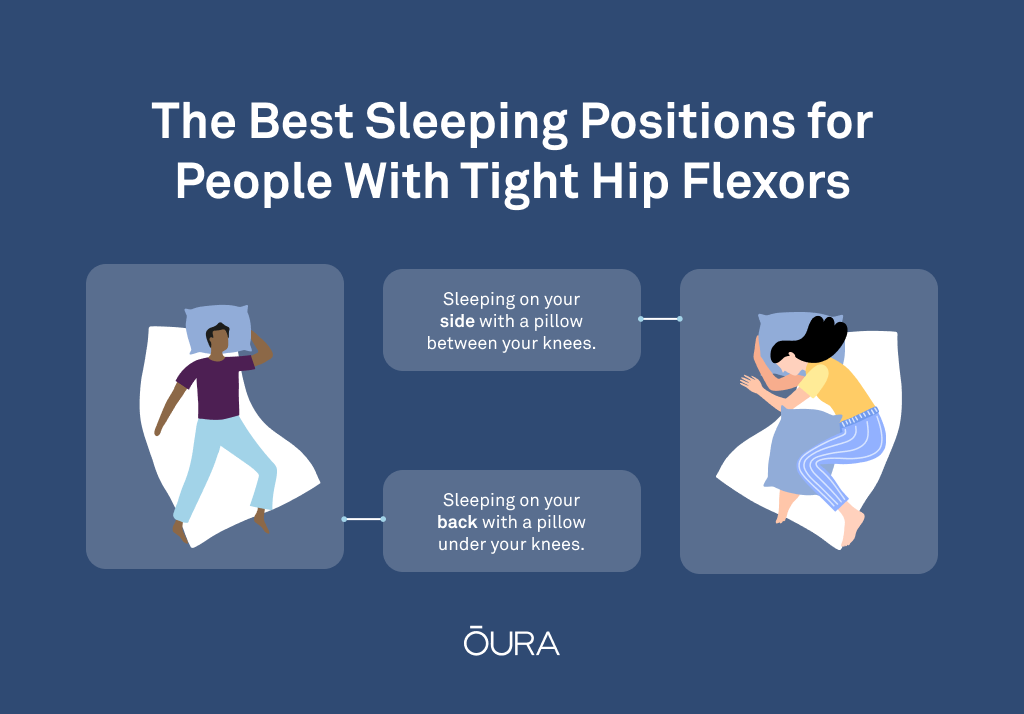
Sleeping On Your Back
Sleeping on your back is considered one of the best sleeping positions for tight hip flexors since it stretches and releases tightness in the flexors.
The science behind sleeping on your back lies in the natural curve of the spine. To ensure spinal alignment, the spine has three natural curves that must be maintained during sleep. Sleeping on your back preserves these curves and alleviates pressure on the hips and lower back.
Moreover, this sleeping position can promote spinal alignment and help distribute your weight evenly across the mattress, which can help reduce pressure points, pain, and discomfort.
RELATED: How Does the Soldier Sleeping Position Impact Sleep Quality?
To optimize this position:
- Place a pillow under your knees to reduce spine curvature and relieve lower back and hip pain. Make sure the pillow under your knees is thick enough to keep your hips in a neutral position.
- Use a supportive pillow for your head and neck but ensure that it’s not too high. An excessively high pillow can strain your neck muscles.
Sleeping On Your Side
Sleeping on your side can help keep the hips and spine aligned, reducing pressure on the hips and promoting comfort. Plus, this position also helps reduce snoring and sleep apnea, leading to better sleep quality.
It’s worth noting that when it comes to sleeping on your side, the fetal position is often recommended. This is due to the position allowing the hips to flex and the knees to bend, helping to stretch the hip flexors and relieving any pressure on them.
To optimize this position: Place a pillow between your knees to help keep the spine in a neutral position and prevent the top leg from pulling the spine out of alignment.
RELATED: What You Need to Know About The Yearner Sleeping Position
Sleeping Positions To Avoid if You Have Tight Hip Flexors
Sleeping on your stomach is generally not recommended if you have tight hip flexors. It can pull your spine out of alignment, putting pressure on the lower back and hips. Sleeping on your stomach can also put pressure on your neck and shoulders, resulting in pain and discomfort over time.
However, every person’s body is different and you may find the position comfortable. In addition, you may benefit from a reduction in sleep apnea and snoring since gravity keeps the tongue and soft tissues from blocking the airways.
RELATED: Why Do I Sleep With One Leg Bent Up? The Half-Stomach Position
If you do sleep on your stomach:
- Put a pillow under the hips to support the spine and prevent the hips from sinking into the mattress.
- Use a flat pillow for your head to maintain good spine alignment.
There’s no one-size-fits-all sleeping position for people with tight hip flexors — what works for others may not work for you. You have to experiment with different sleeping positions to find the most comfortable and supportive position for your needs.
You will also want to invest in a good-quality mattress, follow a regular sleeping schedule, and incorporate some exercise and stretching into your daily routine. For example, you may find yoga particularly beneficial for relieving hip pain and promoting better sleep quality.
How to Stretch Psoas While Sleeping
If your psoas feels tight, you don’t necessarily need to add another stretching session before bed — your sleeping position itself can help. The key is to place your hips in a position that reduces compression and gently lengthens the front of your body.
One effective method is lying on your back with a small pillow or bolster under your lower back or pelvis. This creates a mild extension through the hips, encouraging the psoas to release. Another option is side sleeping with your top leg extended slightly behind you (supported by a pillow if needed), which opens the hip flexors without forcing them into an uncomfortable stretch.
These subtle adjustments aren’t intense stretches, but they allow the psoas to relax passively overnight — reducing stiffness and making mornings more comfortable.
FAQs: How to Stretch Psoas While Sleeping
What is the psoas muscle, and why does it get tight?
The psoas is a deep hip flexor muscle that connects your spine to your legs. It often gets tight from prolonged sitting, poor posture, or repetitive activities like running and cycling.
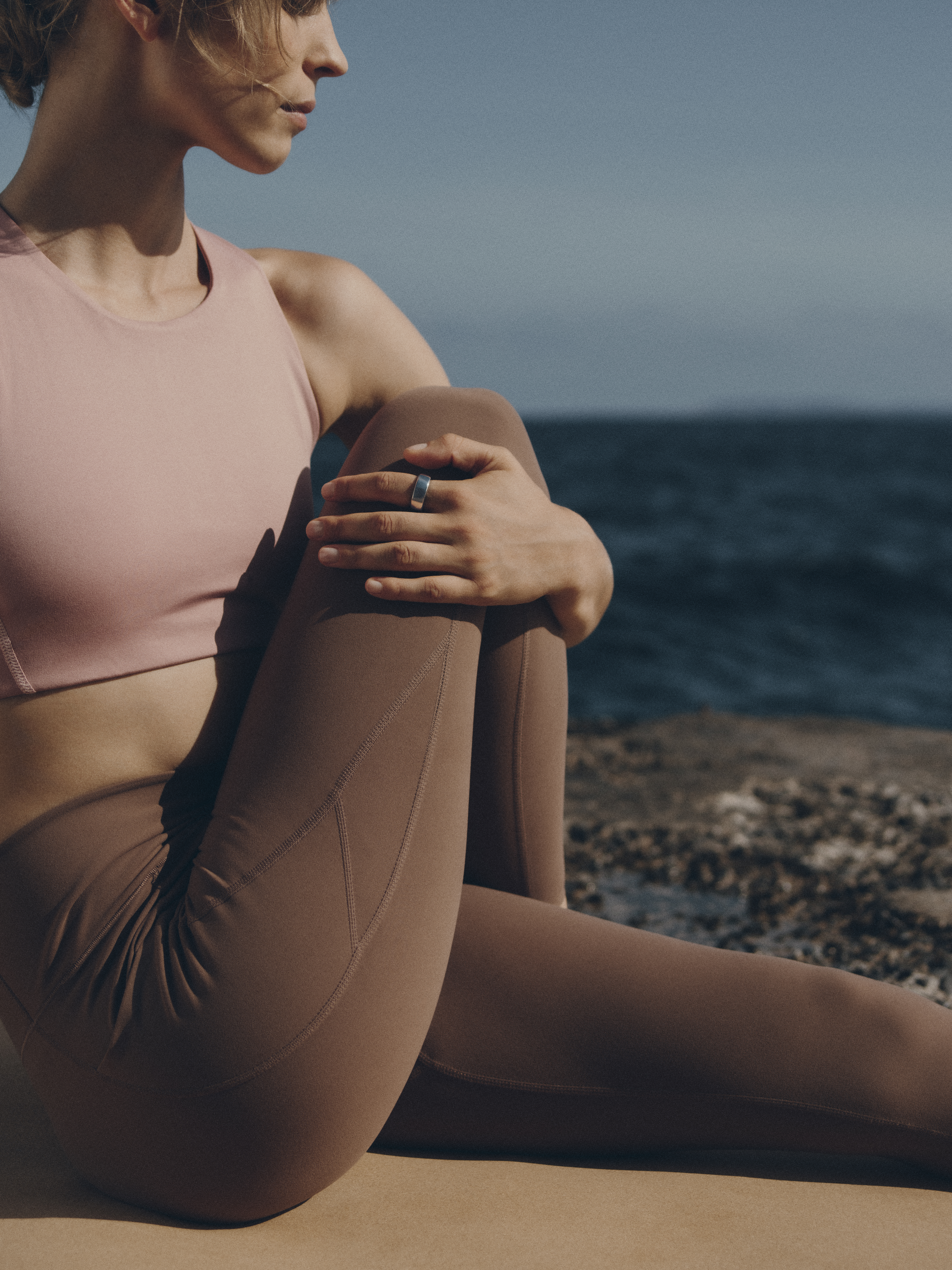 Can you actually stretch your psoas while sleeping?
Can you actually stretch your psoas while sleeping?
Yes — by sleeping on your back with a pillow under your knees or on your side with a pillow between your legs, you can gently lengthen and relax the psoas overnight.
What is the best sleeping position for tight hip flexors and the psoas muscle?
The best sleeping position to stretch the psoas is lying on your back with a pillow under your knees, which reduces hip tension and allows the muscle to lengthen naturally.
How do I know if tight psoas muscles are affecting my sleep?
Common signs include hip stiffness, lower back pain, difficulty getting comfortable, and nighttime restlessness. Oura’s Nighttime Movement and Sleep Score features can also help identify whether discomfort is disrupting your sleep.
Can stretching the psoas before bed improve sleep quality?
Yes — incorporating gentle stretches or yoga poses like low lunge or reclining bound angle before bed can relax the psoas, help you settle into a comfortable position, and improve sleep quality.
Is sleeping on your stomach bad for the psoas?
Stomach sleeping can increase hip flexor tension and strain the lower back, making it one of the least effective positions for psoas relaxation.
RELATED: 5 Ways to Upgrade Your Sleep Hygiene





